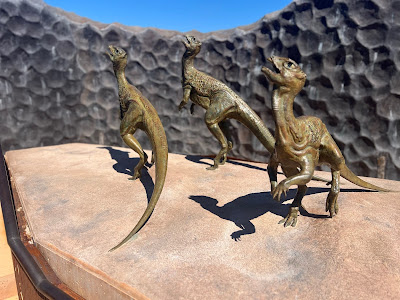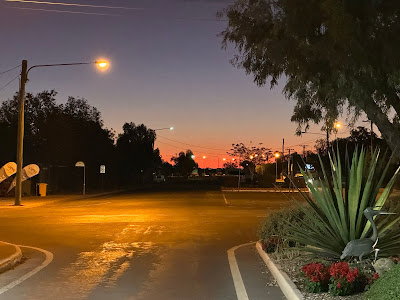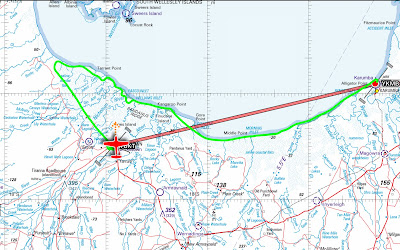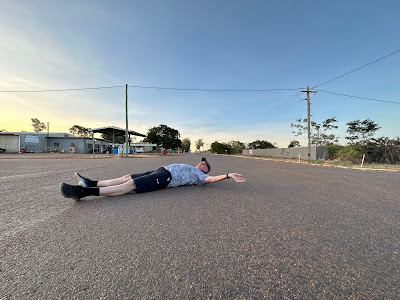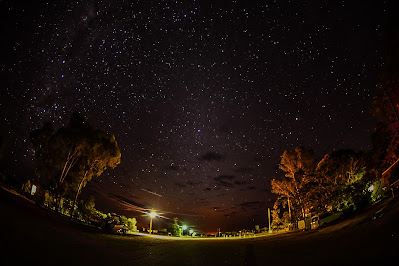There were westerly winds of 20-25kts forecast for our final flights back to Brisbane from Charleville. That was good news as we were flying almost due east! Apart from the time spent taking off and landing, strong winds in outback Australia aren't the same concern as they are in New Zealand. As the land is flat there's nothing for the air to rise over and create eddy's and uncomfortable (and sometimes dangerous) rotors like New Zealand. We enjoyed ground speeds of 140 - 150kts (259 - 278 km/hr) all the way.
The total distance from Charleville to Redcliffe was 237nm (438km) so we decided to stop after approx. 1hr at Roma. I'd been told there was a good cafe in the terminal so it seemed like a good idea to stretch our legs, have a pee and grab a coffee there. Unfortunately with no scheduled flights imminent the cafe was closed. However, we did the other two things!
The final flight from Roma back to Redcliffe (where we'd hired VH-DXJ from) was uncharacteristically quiet compared to the banter I've enjoyed with Bruce and Rob during previous flights. I think we were all reflecting on the good times we'd had over the last 11 days and that our adventure was coming to an end.
About 75nm out from our destination things started to get busy as we had to avoid active military areas and descend beneath Brisbane's airspace. We were also passing through a busy area pilots from Redcliffe, Caboolture and Coloundra use for training. There was a bit of traffic about but nothing too bad until we encountered an annoying helicopter practicing auto-rotations at Redcliffe.
With final bump onto Redcliffe's sealed runway our trip was over :(
We busied ourselves for the next hour unpacking and washing the aircraft to return it spick and span.
It's been a great trip with a mixture of new places and places I've already visited. I really enjoyed showing Bruce and Rob the outback and, of course, flying up the east coast to Cape York was a highlight. That's a corner of Australia I've now "ticked off".
Bruce and Rob were great company and we never failed to find things to talk about. We all work in Information Technology and so many work stories have been exchanged. As expected when three guys are travelling together the conversation was a bit risqué at times (they started it). They are both aviation enthusiasts (a bit more military oriented than I) and were genuinely interested in the planning and conduct of our flights. Thanks for your company guys.
Until next time ...
 |
| After a long multi-day trip I always give the aircraft a kiss of thanks for keep me and my pax safe. It's a tradition started long ago! |
Leg Summary
Charleville (YBCV) - Roma (YROM)
Distance: 135nm (250km)
Time: 1.1hrs
Alt: 5,500ft
Roma (YROM) - Redcliffe (YRED)
Distance: 237nm (439km)
Time: 1.8hrs
Alt: 5,500ft
Trip Summary
Planned distance: 2,745nm (5,083km) + various meanderings to take in scenery
Total flight time: 28.8hrs
Landings: 16
Fuel: 1,332.87 litres
Fuel cost: Min AUD$2.60/litre (Redcliffe) - $3.11 (Weipa)
Consumption: 46.3 litres/hr







